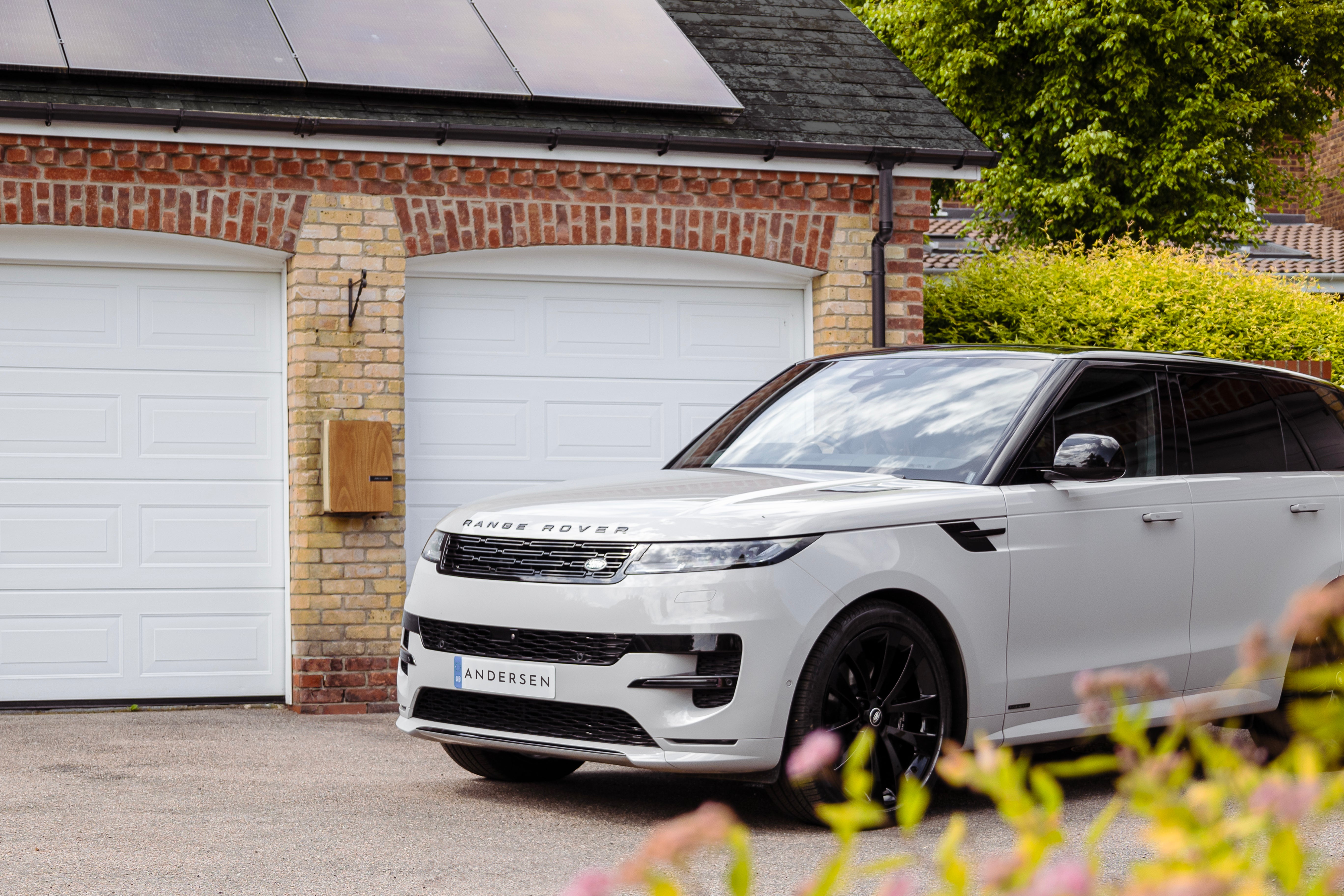The classic car market is evolving at pace with the adoption of electric as a new means of propulsion. The list of iconic cars which are now enjoying a second (and more sustainable) life seems to grow by the day. Be it classic cars or restomods, the reimagination of icons is something we embrace here at Andersen.
The latest icon to undergo a complex conversion to electric restomod vehicle status is the Classic Range Rover by Lunaz. The Northamptonshire based company restores and electrifies the some of the most significant British classic cars in history such as Rolls Royce, Bentley, and Aston Martin models. At their Silverstone base, the company creates, develops, and produces a unique electric powertrain which is the first of its kind to be able to be utilized on many classic cars.
So, what is driving this shift in demand for classic EVs? Is this a short-term trend or will we see more cars find a new lease of life? We can’t answer that question with conviction, but scarcity is always a key driver in the luxury car sector.
Having something unique and customised to your precise needs is becoming more important as a means of differentiation. At the same time, we are seeing more UK cities embracing low emission zones and solar energy. The cost and inconvenience of running an internal combustion engine car is increasing. And then there is also the angle of sustainability and the notion of up-cycling.
For Lunaz, the demand for a clean-air classic electric Range Rover is all they require as a proof of concept to preserve one of the most significant cars in the world.
True to the design principles of Lunaz, all vehicles set new benchmarks of excellence. Exquisite engineering, craftsmanship, and a clear desire to be ever more sustainable is really catching the attention of luxury car buyers seeking exclusivity.
In 2021, the company announced that it was taking orders for the first tranche of electric Range Rovers. This model is now accounting for over 45% of all their sales. The Lunaz Range Rover comes with an option of ‘Town’ configuration with places more emphasis on comfort, whereas the ‘Country’ versions enable better offroad performance.
As typically with any micro manufacturer, Lunaz customers demand further exclusivity providing more bespoke options for both interior and exterior treatments. Examples include the integration of vintage clothing into the vehicle’s fabric palette, Starlink Wi-Fi connectivity, and switchgear made from upcycled ocean plastics.
Owners of the ‘Country’ versions have taken further steps to personalise the dynamics of their vehicles to match their local terrains. With clients spanning all corners of the globe, these cars have been optimised to conditions with the inclusion of bespoke options such as ski equipment racks complete with ‘warm boxes’ for hats and gloves in preparation for a day’s skiing.
Two even more extreme variants of the Range Rover include a Long Wheelbase variant of the Town configuration, and the second is a ‘Safari’ version of the County. The latter was inspired by the vehicle in the James Bond film Octopussy.
Lunaz are not the only people converting icons and classics to electric power. Over the past couple of years, we have seen many new and established brands step into this space.
Examples include Zero Labs who have revolutionised the original Ford Bronco. Everrati started with the Porsche 911 and have now just converted the Land Rover Series IIA. Charge Cars is an exciting new brand which making a modern interpretation of the 1967 Ford Mustang proving that muscle cars can be electric. And then there is Jaguar Classic making an E-Type Zero using mechanicals from a Jaguar I Pace. And this is just scratching the surface. There are many more companies starting to apply their specialist skills to the classic / restomod universe.
As you can expect, the depth of engineering requires hundreds of hours of craftmanship and skill to execute to the discerning needs of each brands clientele. The luxury EV marketplace is clearly not exclusively for new vehicles. These cars command price tags into the hundreds of thousands of pounds making them accessible only to the very few.
A key question is whether this is sacrilege to take an already rare and valuable car and remove often its most defining feature and replace with an electric motor. In some instances, these conversions can be retrospectively reversed allowing the preservation of the classic vehicle at some point in the future. For many owners, it is the knowledge that they can drive their iconic vehicle in the safe knowledge that the propulsion system is thoroughly modern, sustainable, and won’t let them down – something we fully embrace here at Andersen.
When you have the ultimate classic electric Range Rover, it makes sense to have the best EV home charger. The Andersen A2 can be configured with 96 assorted colour combinations with unrivalled aesthetics meaning that it can stand out or blend into the architecture to suit the specific needs of each customer. A choice of 7kWh or 22kWh options provides further choice enabling our customers to enjoy faster charging speeds if available.
Sharing the same design principles as Lunaz, the A2 charger also features British engineering and a true focus on craftmanship. Many customers opt for the Accoya wood option, which is sustainably sourced, low maintenance, beautiful, and strong. Sustainability is core with solar home charger integration allowing owners of new electric vehicles or electric classic cars to enjoy the benefits of zero emission driving. From Teslas and Porsche Taycans to classic Range Rovers or Jaguars, the A2 can seamlessly power all electric luxury cars.
It is also exciting to see the worlds of electrification and vehicle customisation come together to create iconic models such as the ones Lunaz are developing. Much like the design of our luxury home EV chargers, which are sympathetic to their architectural surroundings, customisation is a big part of our offering. We look forward to welcoming more reimagined restomods and classic cars soon.














Leave a comment
This site is protected by hCaptcha and the hCaptcha Privacy Policy and Terms of Service apply.